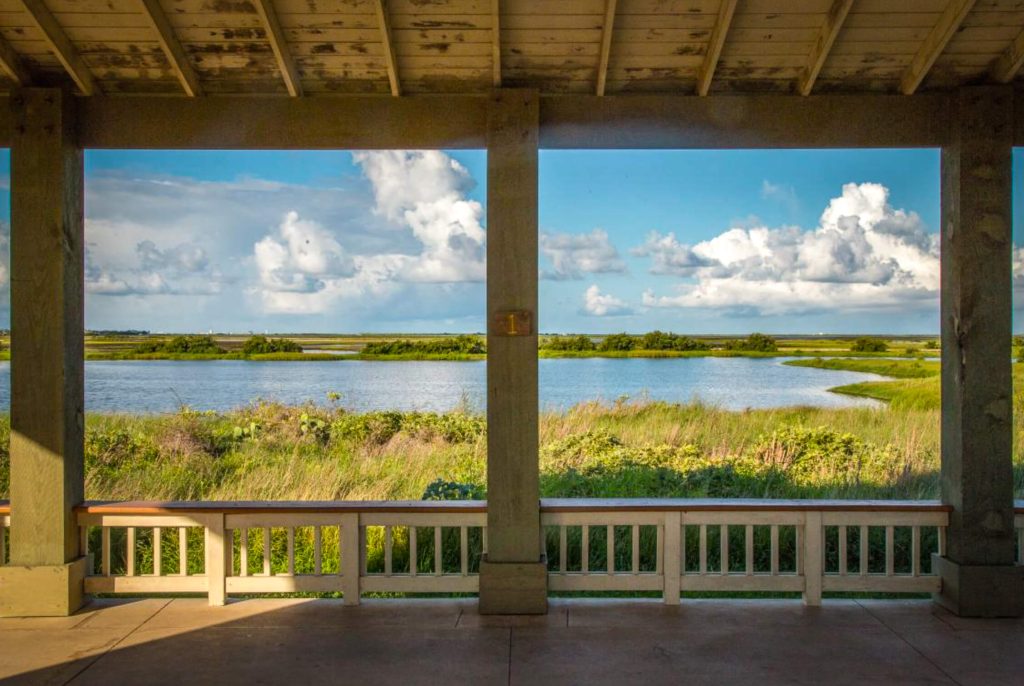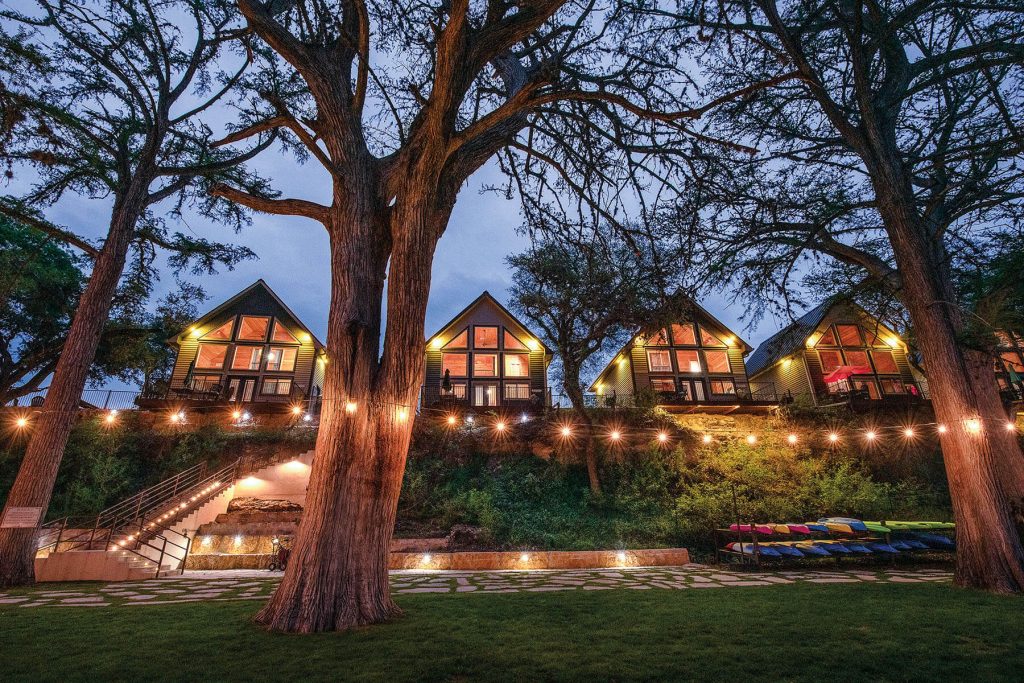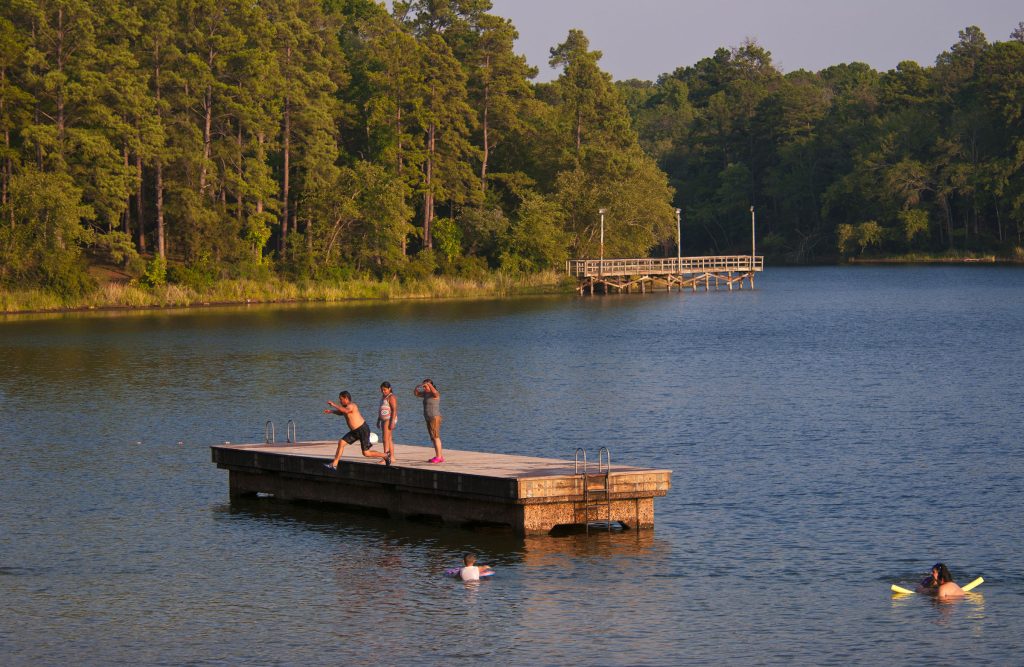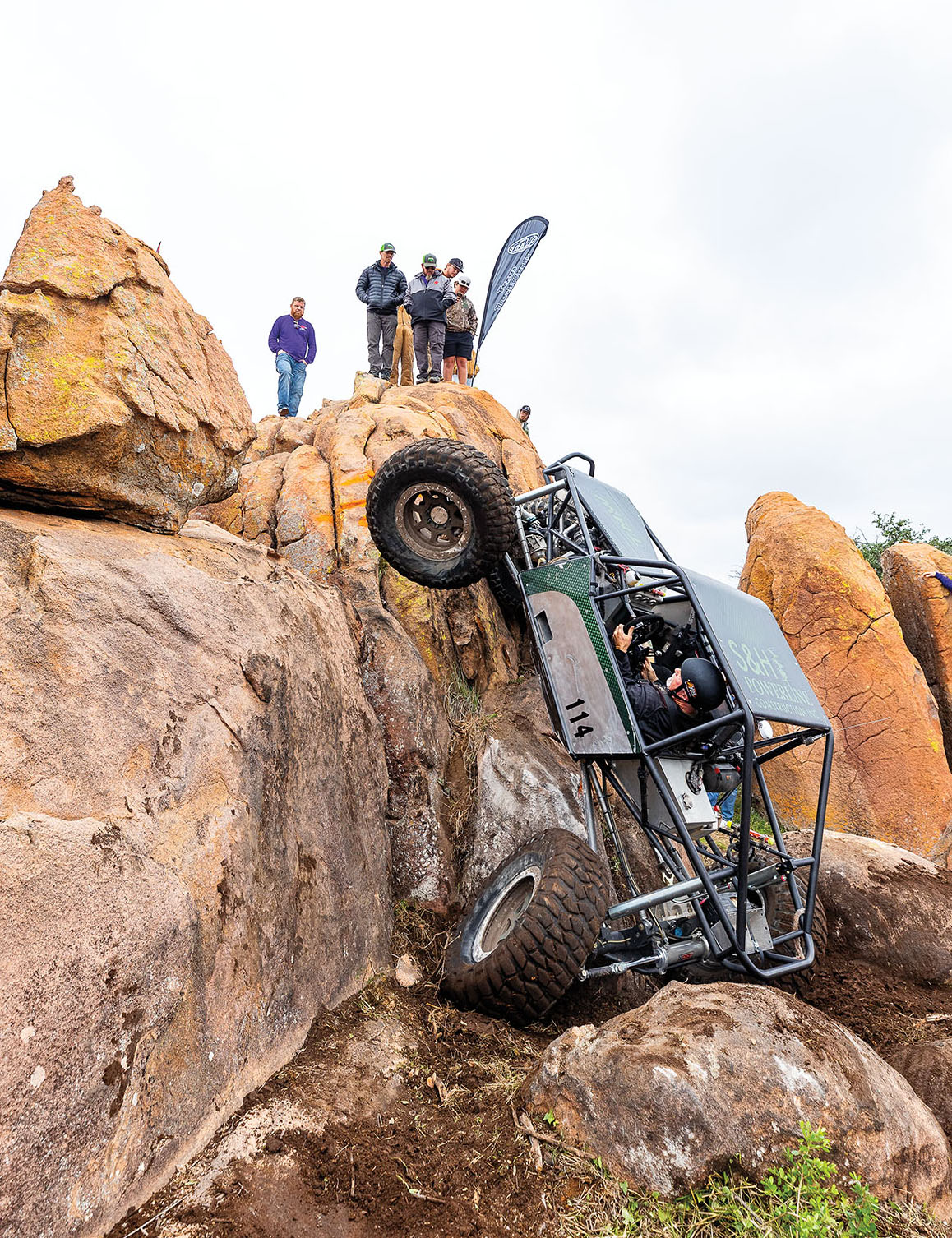
The annual Texas Top Gun Shootout near Mason is a rock crawler’s paradise.
Texas Top Gun Shootout
Katemcy Rocks
Offroad Park,
4869 SH 29, Mason.
texastopgun
shootout.com
Organizers Shain Chapman and Randy Kruse have day jobs as a lawyer and a realtor, respectively, but their passion is rock crawling—a niche sport that makes the cost of a nasty golf habit look like Monopoly money. The objective is to drive a 4×4 vehicle over a series of rocks, boulders, and natural obstacles within a roped-off course smoother and faster than anyone else. The Top Gun Shootout—the name is cribbed from the 1986 blockbuster movie starring Tom Cruise—lures the best rock crawlers in the country with its $10,000 grand prize. But most participants are just here to put themselves to the test on over 800 acres of four-wheeling terrain with vehicles that can cost upward of $140,000. “People think we’re nothing but rednecks and hillbillies,” Kruse says, sidling up to me in his multicolored poncho and black Stetson while taking a sip of his Coors. “But we’re rednecks who made good.”
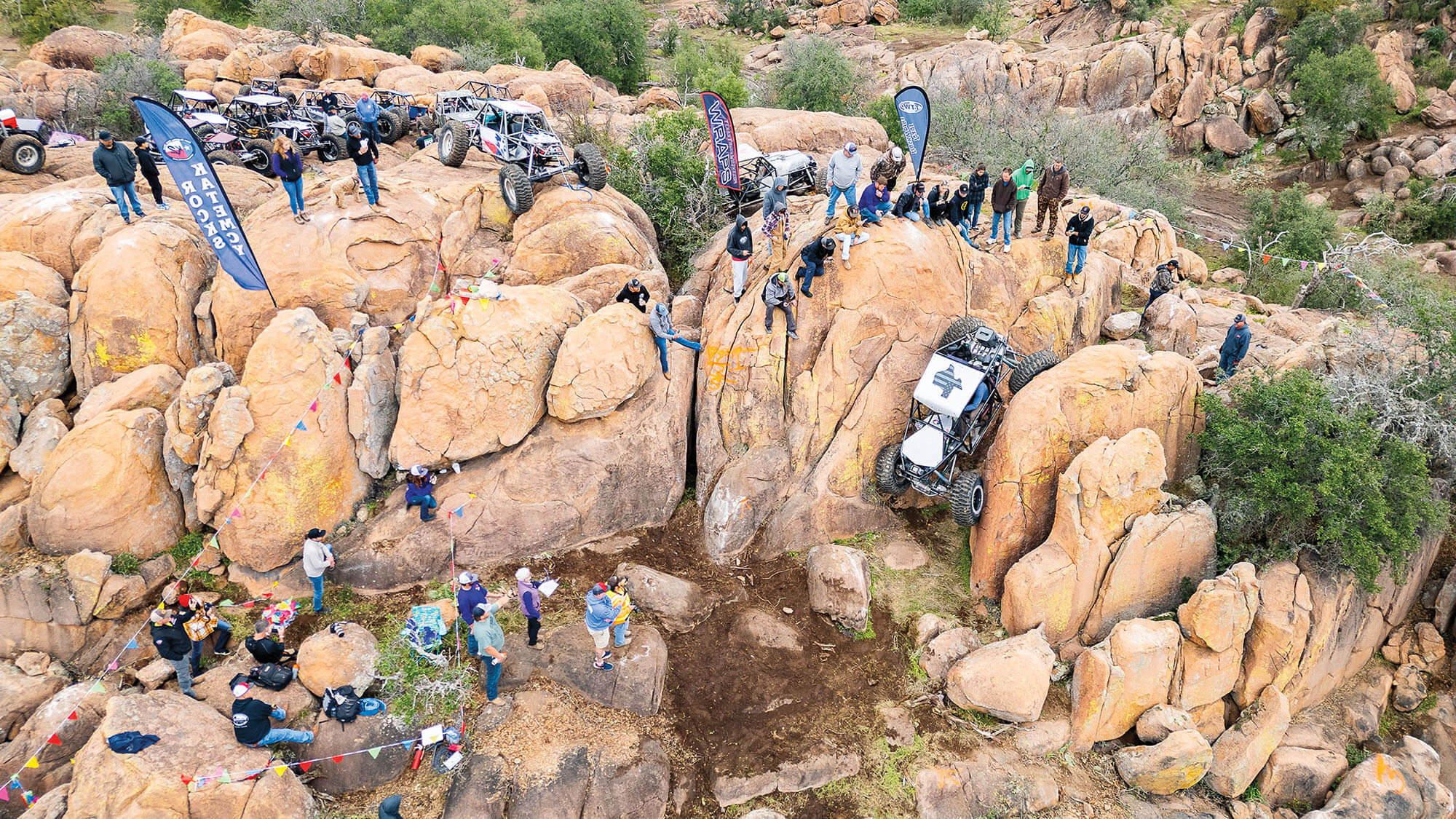
Off-road buggies and spectators swarm the granite boulders around the competition course.
As much as rock crawling is about getting up and down granite, it’s also about being one with the vehicle, taking the time and patience to envision a practical line through a minefield of sharp cliffs and wide cracks. You have to find a clean, navigable path; keep all four tires churning with traction (front tires are often filled with water to keep them weighted to the rocks); and produce the same kind of motor-control Zen that enables a child to work a marble across one of those wooden, pockmarked maze boards. “I think what draws a lot of guys out here is the unknown,” says Thomas Meiser, a competitor with dreadlocks and a nose ring who’s driven 20 hours from Parowan, Utah. “You come out here and you never know what’s gonna happen or what type of situation you’ll be in.”
While unexpectedly beautiful and soul stirring, the rocks out here are fickle, providing insane grip and traction, even though they’re prone to flaking or giving way. The topography is composed of Town Mountain granite, Valley Spring gneiss, and Packsaddle schist. It might not be good for anything outside of raising goats, but it makes for one hell of an off-road playground. Other areas of the country are known for rock crawling as well, with the sandstones of southern Utah perhaps the most famous. But Central Texas has something few people know about: exposed peaks of a 500-million-year-old mountain range that pierce the surface. Called the Grenville belt, the range starts in Canada and works its way down along the Adirondack, Appalachian, and Ouachita ranges before exiting through southern Oklahoma. it doesn’t show its face until right here in Central Texas. And it doesn’t make another appearance until around Marathon, before venturing on, underground, to El Paso and Mexico.
As Saturday turns to Sunday, it’s abundantly clear that a $140,000 vehicle can do the unthinkable. At one point in the course, the competitors must drive through two shark’s-tooth-shaped boulders, called a V-notch, literally pinning themselves between two vertical boulders while elevated at least 15 feet off the ground. They drive from flat ground into this notch, and by the time they drive out of it—after they have been suspended in air for at least five minutes, their tires making the smallest adjustments, working tirelessly to remain unstuck while also resisting the urge to punch the engine and come flying out all wonky—they basically fall bumper first into a mini plateau. And that’s just halfway through the course.
The danger is clear. One guy’s buggy ends up on its roof, the vehicle leaking oil or coolant or something brackish-looking all the way down his inverted, seatbelt-suspended body until it pools in the dirt beneath his head. It’s one of the reasons every vehicle is outfitted with two fire extinguishers and all the competitors are required to wear helmets. Bill Stayner, who everybody calls “Wild” Bill and is known for rolling his vehicle, tells me about getting his 1982 Toyota truck stuck in a river crossing in California. After abandoning the vehicle, he was rescued by some kayakers, but the Toyota spent four days rolling around the bottom of the river. Wild Bill has driven the same truck here, and it looks like something from Mad Max. When asked why he tried to cross the river, he smiles through his thick, white beard and says, “There was a hot tub on the other side.”
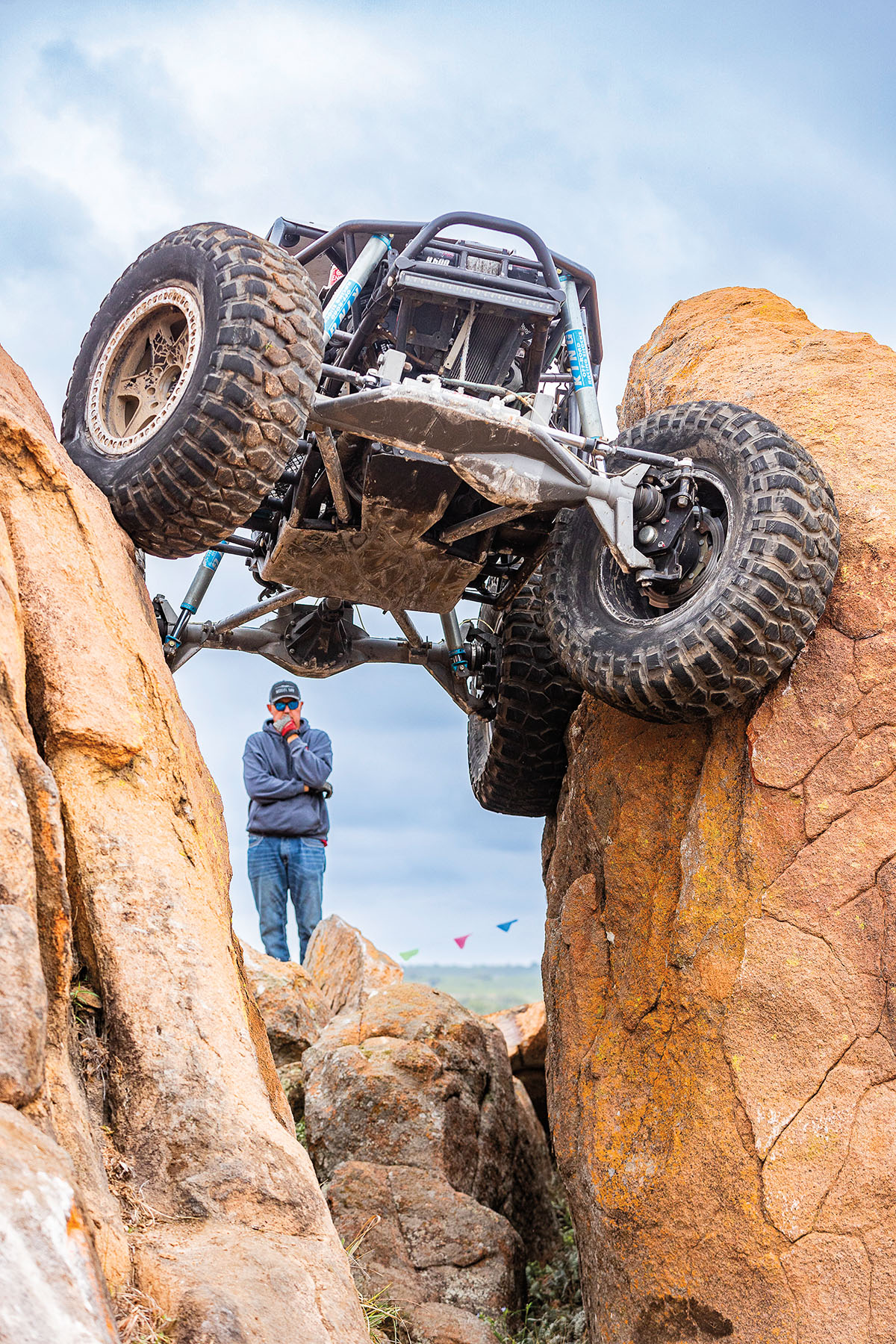
Navigating a V-notch is an act of precision, patience, and physics.
Gunning for Glory
The Top Gun Shootout, held annually in November, hosts Drag Axle and Texas Top Gun competitions. The Drag Axle is a timed run on Saturday, where drivers compete to be the fastest through the course. The winner is awarded $2,000. The two-day Texas Top Gun has a timed qualifying run on Saturday, utilizing the same course as the Drag Axle. On Sunday, a new course is revealed, designed specifically for the special capabilities of portal axle buggies. These vehicles have more ground clearance and, when paired with 42-inch tires, can maneuver through ridiculous rock formations.
The competitors extol the “community” and “camaraderie” within the sport. Defending Top Gun champ, Utah resident John “Mad Cow” Hembel, reiterates this sentiment. A former downhill skier who was a World Cup Champion in 2003, he got his nickname by shouting “Je pense que j’ai la maladie de la vache folle,” which roughly translates to “I think I have mad cow disease,” before speeding down a mountain at 130 mph during a practice run in Europe. Mad Cow knows what it takes to compete. “If I break an axle and I don’t have one,” he says, “somebody out here who does is gonna give it to me. It’s not like they’re gonna hold onto it because, ‘Well, if he doesn’t run, I win.’ The vibe is we want to compete against one another; we want to beat the best, and the best is out here. We don’t want to beat somebody just because they broke.”
By the end of the two-day event, after people have winched each other off the rocks and welded their broken buggies back together, someone finally makes it all the way up the 40-foot granite rock face to the finish line. It’s a sight to behold. The rock buggy defies physics and gravity to climb its way—while nearly vertical—to the top. Onlookers are as excited as the winner, a cool, calm guy who speaks about the mental focus it takes to conquer nature, to push the limits of a vehicle to the edge—what some might call the “danger zone.” Fittingly, the winner of the 2023 Top Gun Shootout is a Corpus Christi resident named Maverick. Maverick Volesky.
